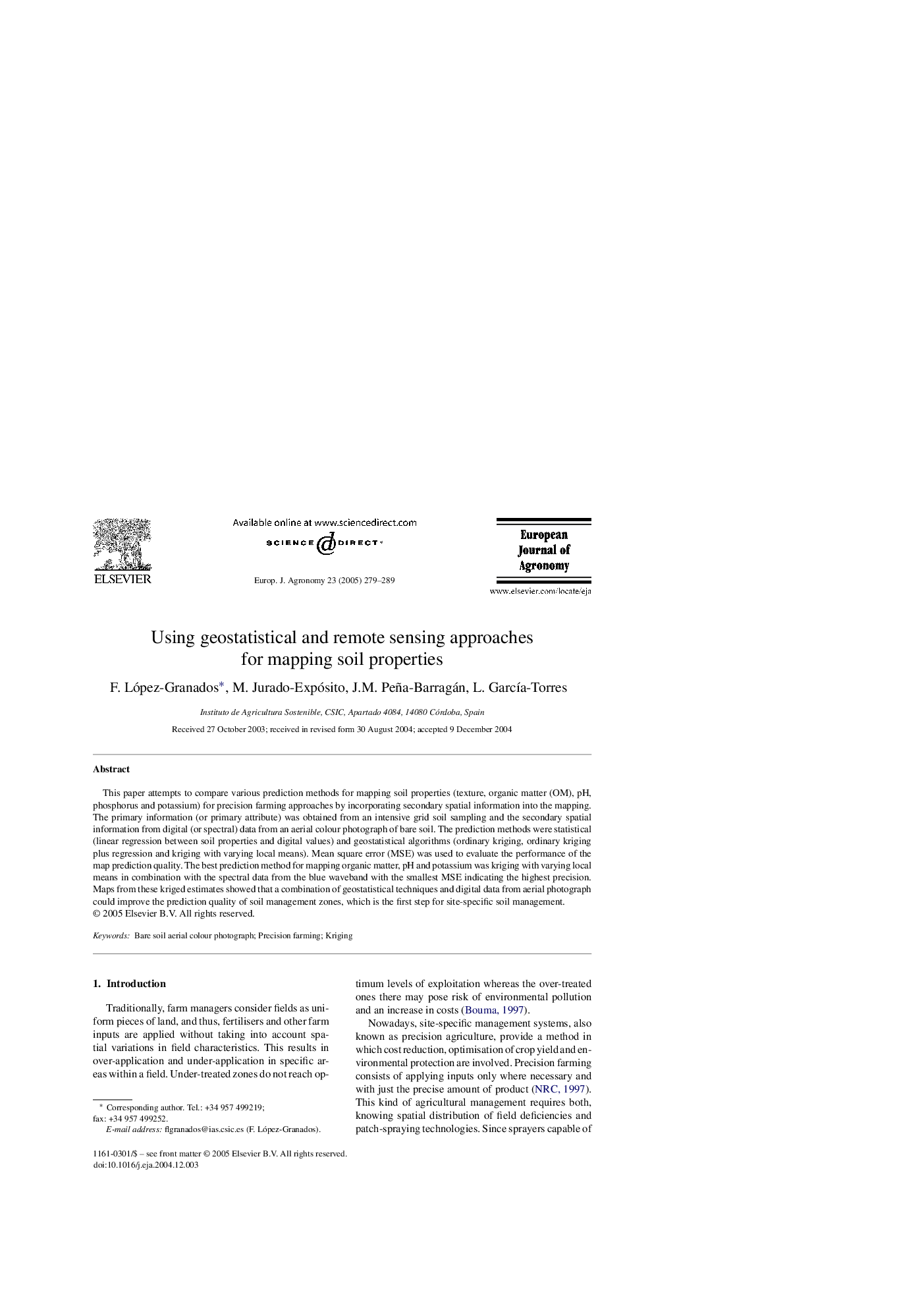| Article ID | Journal | Published Year | Pages | File Type |
|---|---|---|---|---|
| 10116607 | European Journal of Agronomy | 2005 | 11 Pages |
Abstract
This paper attempts to compare various prediction methods for mapping soil properties (texture, organic matter (OM), pH, phosphorus and potassium) for precision farming approaches by incorporating secondary spatial information into the mapping. The primary information (or primary attribute) was obtained from an intensive grid soil sampling and the secondary spatial information from digital (or spectral) data from an aerial colour photograph of bare soil. The prediction methods were statistical (linear regression between soil properties and digital values) and geostatistical algorithms (ordinary kriging, ordinary kriging plus regression and kriging with varying local means). Mean square error (MSE) was used to evaluate the performance of the map prediction quality. The best prediction method for mapping organic matter, pH and potassium was kriging with varying local means in combination with the spectral data from the blue waveband with the smallest MSE indicating the highest precision. Maps from these kriged estimates showed that a combination of geostatistical techniques and digital data from aerial photograph could improve the prediction quality of soil management zones, which is the first step for site-specific soil management.
Keywords
Related Topics
Life Sciences
Agricultural and Biological Sciences
Agronomy and Crop Science
Authors
F. López-Granados, M. Jurado-Expósito, J.M. Peña-Barragán, L. GarcÃa-Torres,
